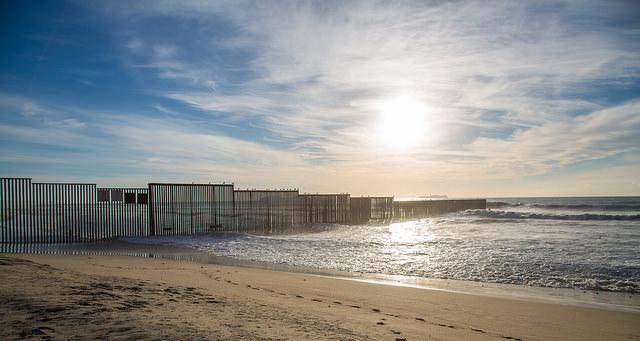America’s ‘Maginot Line’
Posted By John Coyne on November 8, 2016 @ 06:00

Regardless of who wins today’s US presidential election, migration and border security will continue to be central policy issues for America and Americans. The border security policy dialogue in the US, like that in Australia, is deeply polarised. Worse still, finding compromises—let alone solutions to those polarised perspectives—is challenged by irreconcilable ideological perspectives on border security.
Those who hold such deep-set ideological perspectives—on both the secure and humanist ends of the paradigm—often selectively interpret specific incidents as universal truths. One migrant committing a murder certainly doesn’t make all migrants murders or criminals. Such flawed arguments serve to further complicate the challenge of US border and homeland security.
In the face of this polarised debate, ASPI’s Border Security program is today releasing its Strategy report, ‘America’s ‘Maginot Line: a study of static border security in an age of agile and innovative threats’, which critically explores the US contemporary border security experience.
While the paper provides a detailed analysis of the US border construct and its post-modern political challenges, in substance it tells a story of simplistic responses to complexity. Rather than just being a tale of a particularly complex homeland or national security context, the story can serve countries from Europe to Asia as an exemplar of the evolution of border security.
For the most part, US border security remains an operational activity, focused on creating a physical control barrier: a geographical barrier between a nation and those who might do it ill. The physical barrier is selectively permeable, based on, at best, flawed risk assumptions, and at worst, on xenophobic judgements.
The selective permeability of borders needn’t be a controversial challenge if the logic that underpins it engages with the changing nature of threat and risk. By way of example, assumptions about risk involving travellers with European passports need to be revisited in the light of recent attacks in France, Belgium and Germany.
What’s clear is that despite the organisational integration of border security under the umbrella of the Department of Homeland Security, US border security isn’t being managed strategically. Even when facing a range of post-9/11 challenges, the integration of border security was never going to be an easy task, given America’s federal model of government and governance. For starters, solving the strategic challenge involves entities far from the national capital.
While the federal government and its agencies must play a major role in protecting the border from major incursions, the day-to-day management of the border is also an issue for the states that lie on those borders. This requires a great deal of political will and effort.
The key assumption underpinning the operational management of border security in the US is that all harms can somehow be stopped or controlled through the control of individual border crossings or transactions. Unfortunately, the globalised nature of contemporary Western economies means that this operational approach no longer delivers consistent, effective or efficient border security. A change in US border security strategy is desperately needed but seems unlikely to materialise for the time being.
The US and Canada have enjoyed great success in creating a joint border continuum to the north, and that has brought economic benefits on both sides of the border. Unfortunately, the US concept of a border continuum that creates new policy options and defence in depth hasn’t materialised elsewhere.
We argue that border of the future should be a strategically-managed continuum in which disruption capabilities are focused upon by concise intelligence-based risk assessments. That doesn’t mean that all of the existing operational activities and border control measures are redundant. However, this US case study reveals that simplistic border processes are no longer sufficient in the face of amorphous threats. Put simply, neither a regulatory nor a literal wall will provide border security if it isn’t integrated with a number of other mechanisms and measures.
US border security is a story of complexity, but the answer to complexity isn’t strategic or operational isolationism. Rather, it’s strategically managing borders through a focus on disrupting threats while facilitating trade.
In both the US and Australian border security environments, there’s no shortage of new ideas and technology. Unfortunately, for the US there’s a dearth of cohesive overarching border security strategy and architecture. Such a strategy—risk based and intelligence led—is desperately needed to avoid unnecessary, inefficient and ineffective spending of public funds. One area that requires significant and timely intervention is land, air and sea domain awareness that’s integrated into a strategic border security lens.
In times of economic, international and domestic security uncertainty, immigration and border security are likely to continue to be headline issues for many national governments. Governments need to provide security and create a sense of confidence and trust in border security among their citizens. Unfortunately, the measures that provide populations with assurances often don’t have a substantive impact on security, but on perceptions.
For those on both sides of US politics, working out what policy success looks like in the coming months will be central to any meaningful change in meeting both border security and migration challenges.
Article printed from The Strategist: https://aspistrategist.ru
URL to article: /americas-maginot-line/
Click here to print.